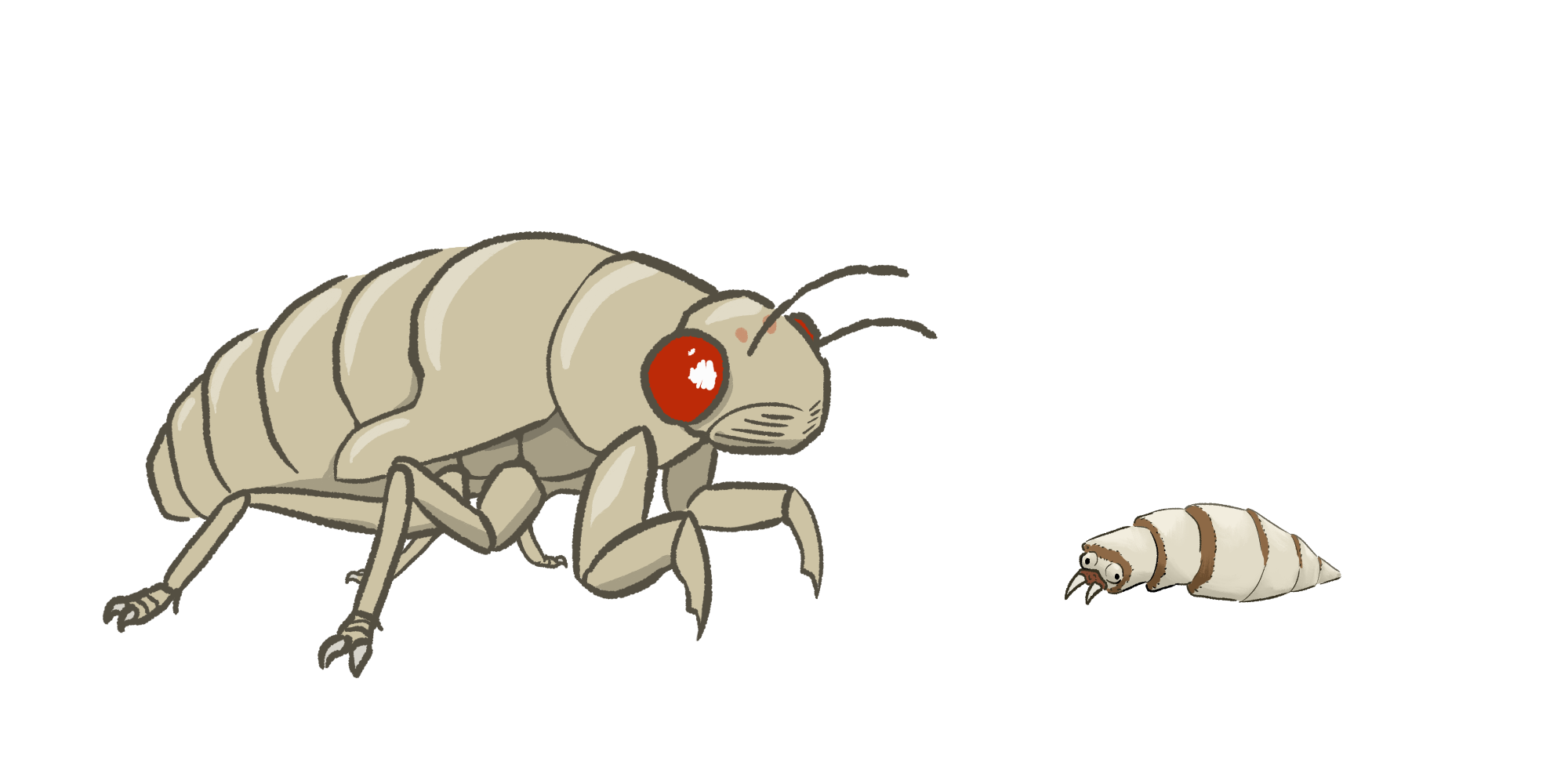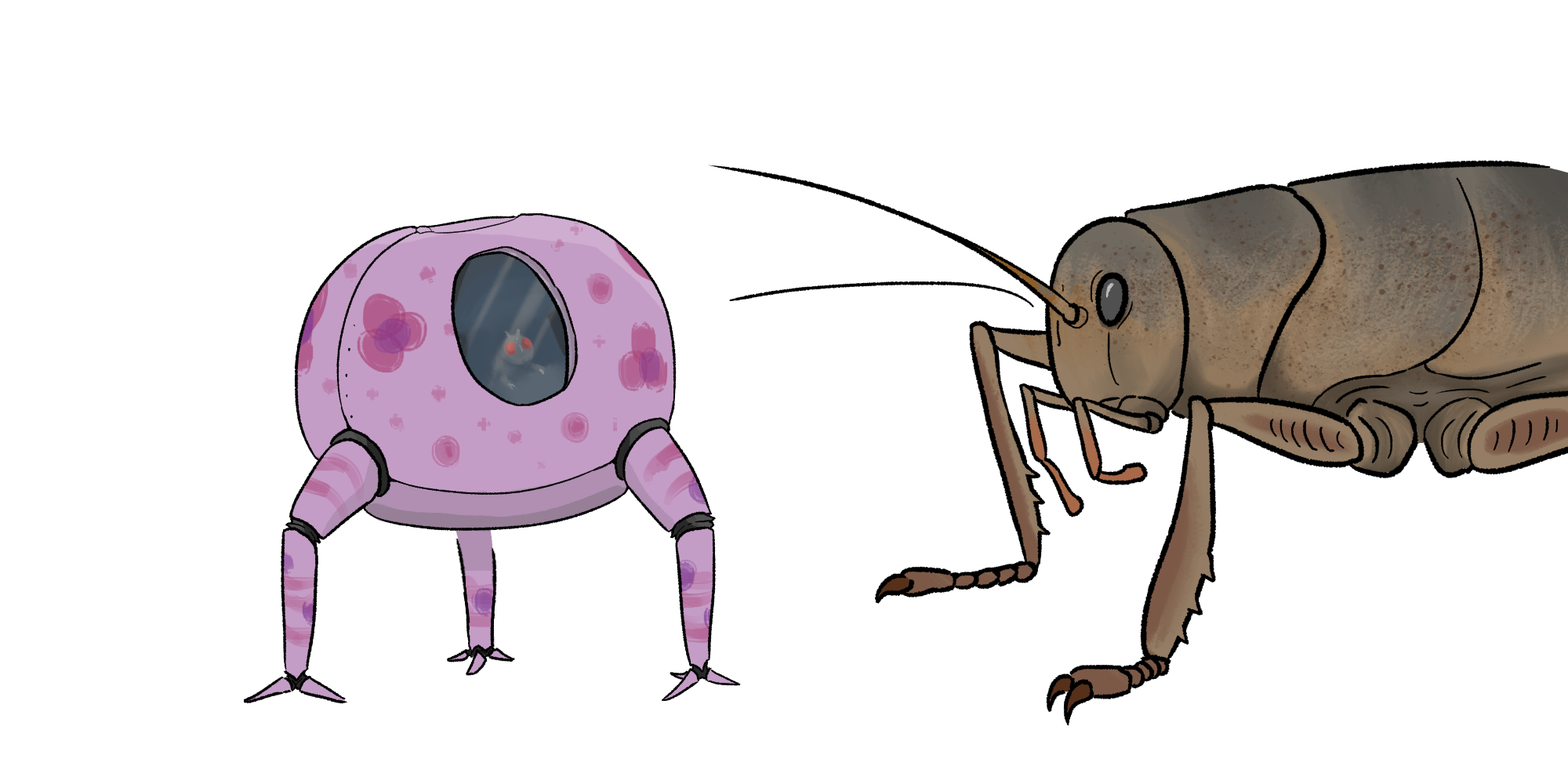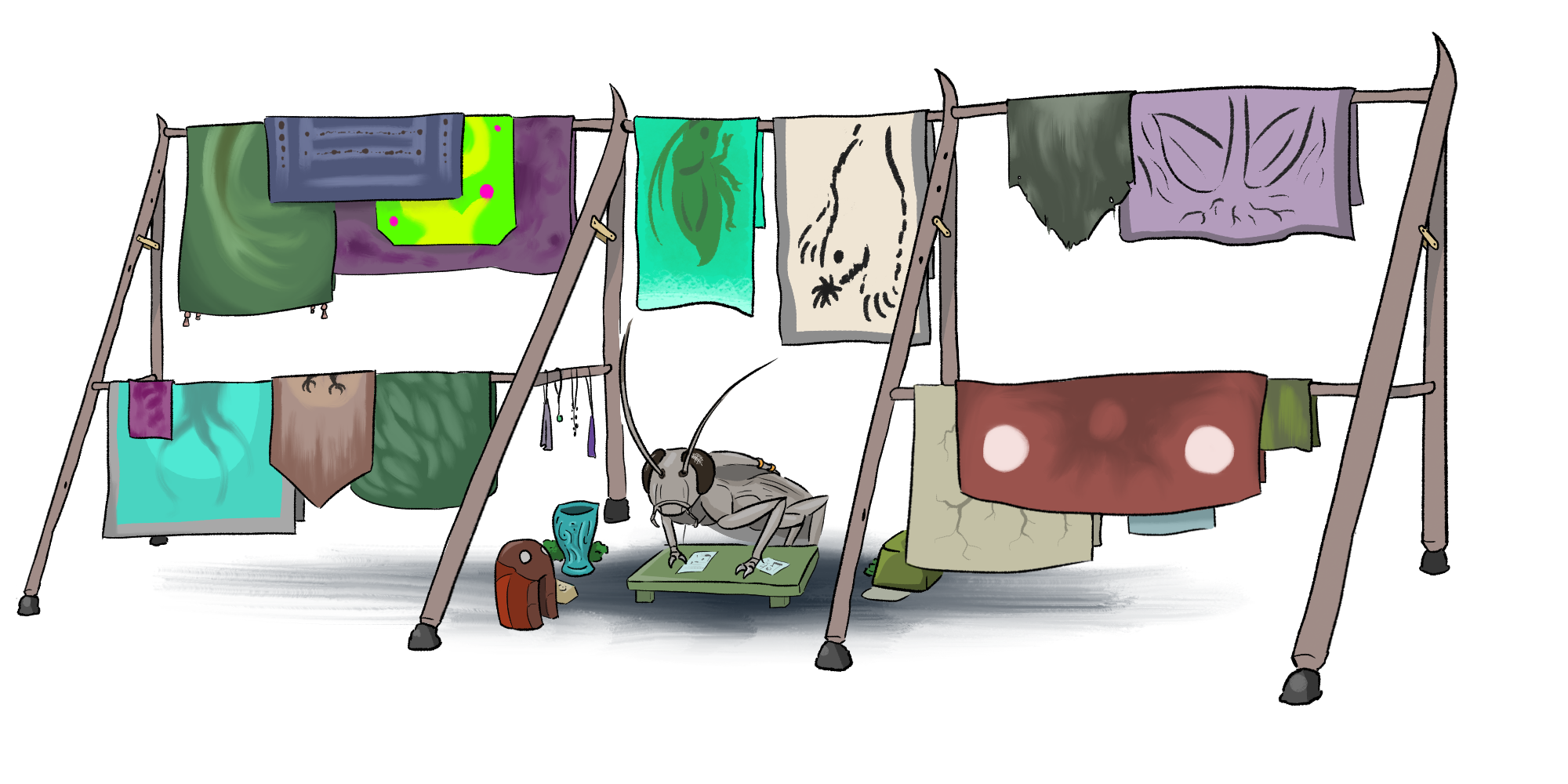An Introduction to Bugkin
While mages may rule the surface, the bugkin (more formally known as the hexakin) rule the hidden places of the world. In contrast with their anthropomorphic neighbors, they are distinguished from their animal counterparts only by their long lifespan and greater intellect. And while mages are all one species, the bugkin consist of thousands, existing in parallel to the mundane insects of the world.

Because bugkin share the same size, diet, environmental requirements, and sensory processes of their mundane counterparts, the natural variation between bugkin species is overwhelming. The early history of bugkin was shaped by these differences, which linger into the modern day despite the advent of assistive technology. This variety has additionally created a complex scene for both artists and art commentators, as people struggle to even perceive the work of their contemporaries.
But there are some attributes that all bugkin share. The average lifespan for all species is around 80 years, though the length of different life stages varies drastically. Some, like cicadas and certain silk moths, spend nearly all their lives as juveniles and perish within months after reaching adulthood. Others reach physical maturity quickly, only to find themselves at the start of a long and slow decline.

The bugkin are the most technologically advanced culture in Cordhan by a wide margin, and their body of knowledge grows more each passing day. After all, science is a collaborative endeavor, and the bugkin are united. For the bugkin, technology is not merely a replacement for magic but something with potential far beyond; the cornerstone and symbol of their society, and what sets them apart from mages.
While electronics and machines affect every part of bugkin life, the mechs stand out as their most iconic invention. Defined as walking vehicles that contain a pilot, they’ve evolved to fill countless niches in the centuries since their invention. Mechs can range dramatically in size; a model designed for a solitary pilot can be smaller than certain species of bugkin, while the largest can carry entire cities. Some mechs are used exclusively for work in dangerous environments, while other bugkin use mechs as their permanent homes. The largest currently-active mech is the walking city Leviathan IV, though some already dream of a Leviathan V that could dwarf its predecessor. Even now, their technology continues to evolve.

While the internet now connects all but the most isolated bugkin, they are physically divided across a vast network of cities and settlements, many of which host unique cultures and languages. Settlements in the hinterlands (the areas west of the mountains, primarily inhabited by mages) were especially isolated, and often developed cultural traditions unlike anything in the cities. But even among neighbors, elements like language could show exceptional diversity.
Bugkin languages can be phoneme-based (using a set of distinct sounds, like most human and mage languages), click-and-hum (using a shifting tone and rapid clicks), pheromone-based, visual, or a mix of various types. Because of the variety in language systems, it is often difficult if not impossible to transcribe names into other languages. In the modern day, many individuals favor names that correspond to concrete concepts or objects, with names based on plants being especially common.
Each of these ancient cultures had a long list of myths and legends, but the stories that survived have mostly been reclassified as fiction as believers dwindle. But the legends once told around fires are retold in childrens’ entertainment videos, and the biases baked into these tales linger for generation after generation. For all that the modern bugkin may see themselves as rational and scientific, their legends are good at surviving unnoticed.
---~<*>~--~<*>~---~<*>~---
To return to the Cordhan index, click here.
To return to the homepage, click here.